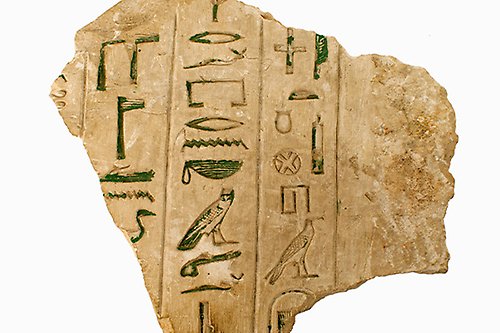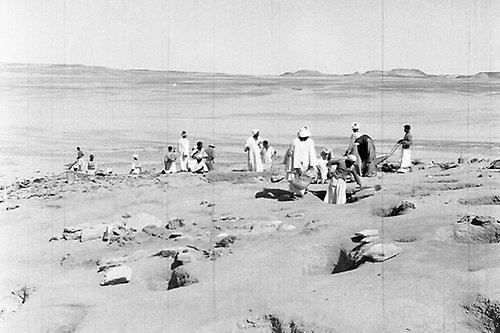Egyptology
Gustavianum cares for two collections related to the subject of Egyptology. As early as the 17th century, it is mentioned that a number of Egyptian antiquities are at Uppsala University. The collection, which in the late 19th century was named the Victoria Museum of Egyptian Antiquities, today consists of approximately 5,000 objects. Most of them originate from the collection that Queen Victoria, Gustav V's consort, donated to Uppsala University between 1890 and 1930. The collection includes stone and ceramic objects, relief fragments from temple and tomb buildings, mummified human and animal remains, painted mummy coffins, textiles, as well as a world-unique collection of ceramic shards with inscriptions, so-called ostraka.
Gustavianum also cares for many of the finds from the Scandinavian Joint Expedition to Nubia (1960-1964), which excavated a large area in connection with the construction of the High Dam near the city of Aswan. The collection includes ceramics from Early to Late Nubian times, jewellery and household items made of stone and metal, as well as a large collection of Late Nubian textiles.
Many of the objects from the collection will be displayed in the Gustavianum, when the university museum reopens after the ongoing renovation. Parts of the collection are also available to researchers and students at The historical collections at EBC, Center for Evolutionary Biology.
%20Bem%C3%A5lad%20kista%20i%20tr%C3%A4.jpg)
Painted wooden chest, VM 152. Egypt, 21st dynasty (ca. 1077 - 943 BC).
The Victoria Museum of Egyptian antiques
Learn more about the Victoria Museum of Egyptian antiques.

The Scandinavian Joint Expedition to Nubia
Learn more about The Scandinavian Joint Expedition to Nubia.

Visit us
If you are interested in visiting the archive in connection with your research or teaching, please contact us and book a visit via historiccollections@gustavianum.uu.se
